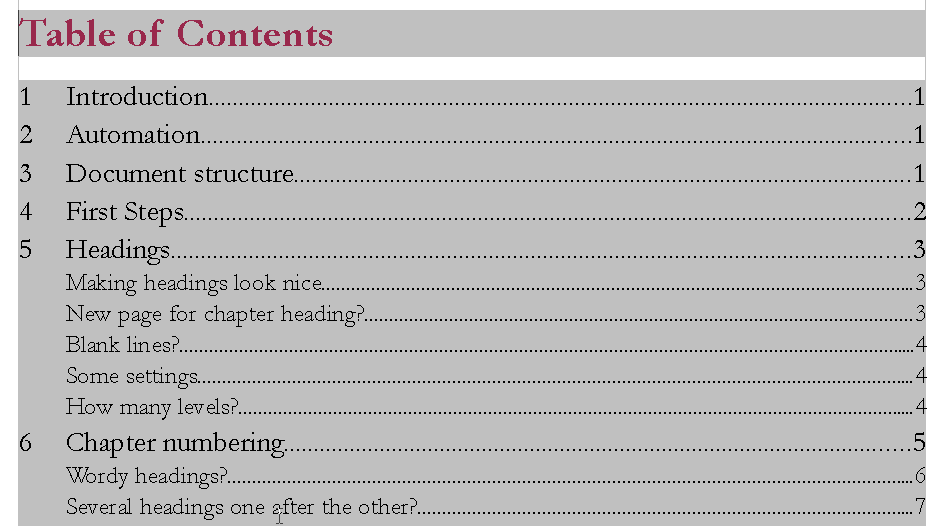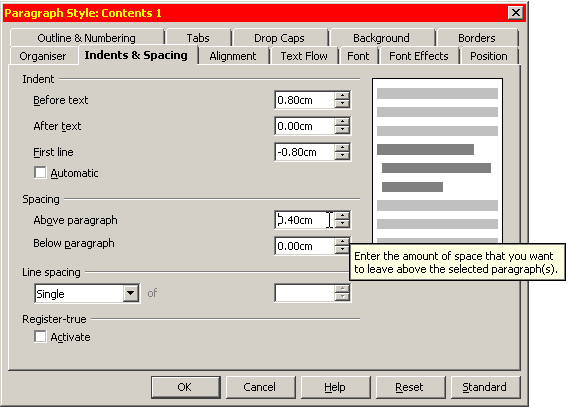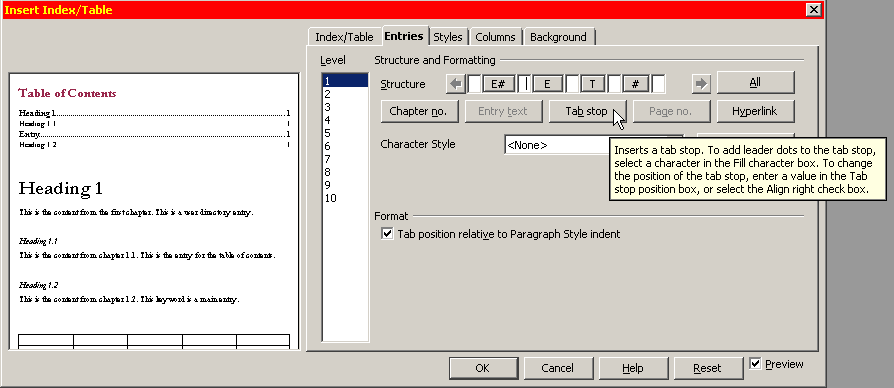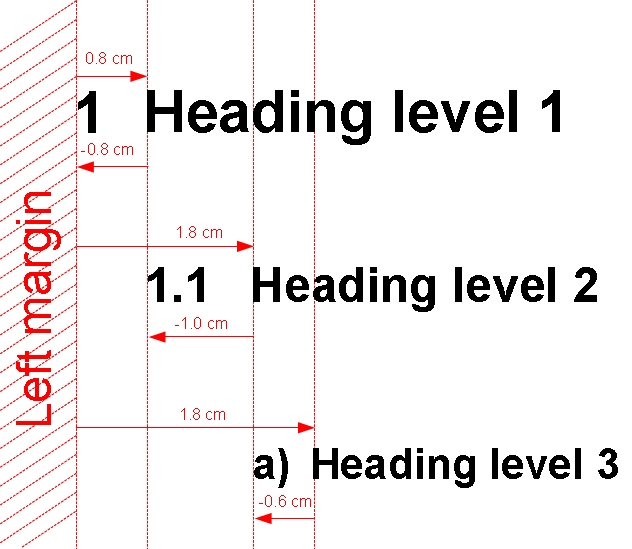Difference between revisions of "Documentation/Writer for Students/Table of Contents"
(+cat) |
m |
||
| Line 95: | Line 95: | ||
</div> | </div> | ||
'''Illustration 9. Abstract view of indenting – indentation depends on width of chapter number''' | '''Illustration 9. Abstract view of indenting – indentation depends on width of chapter number''' | ||
| − | + | <br /> | |
| + | <br /> | ||
| + | ---------- | ||
| + | <p style="text-align:left;">[[Documentation/Writer for Students/Chapter Numbering|< Previous Page]]</p> | ||
| + | <p style="text-align:right;">[[Documentation/Writer for Students/Outline|Next Page >]]</p> | ||
[[Category:Documentation/Writer]] | [[Category:Documentation/Writer]] | ||
Revision as of 15:57, 13 January 2014
- Introduction
- Theory
- Document Structure
- Chapter Headings
- Chapter Numbering
- Table of Contents
- Outline
- Navigator
- Text Body
- Paragraph styles overview
- Reusing styles
- Default Page Formatting
- Title Page
- Papers without a Title Page
- Pages with and without numbering
- Roman Page Numbering
- Group Work
- Proofreading
- Numbered lists and bullets
- Line numbering
- Cross-references
- Footnotes
- Bibliography
- Quotes
- Tables
- Charts
- Pictures
- Snapshots
- Presentations & Graphics
- Cross tables (Statistics)
- Extra Long Web Adresses
- Fonts
- Emphasis
- Special Characters
- Non separable combinations
- Shortcut keys
- Mouse clicks
- PDFs
- Saving your files
- Several files open at once
- Search and replace
- Spell Check
- Synonyms
- Document Infos
- Labels and Form letters
- Help
- Installing Program
- Microsoft Word
- Practice I
- Practice II
Having told the programme what are your headings and having activated their automatic numbering, you can now go on to inserting an automatically generated Table of Contents: Insert › Indexes and Tables › Indexes and Tables.
Illustration 6. Note the alignment
In the pop-up menu you can Evaluate up to Level of your choice. In this present document I have chosen to evaluate only up to Level 1 and so to ignore section headings.
To update your table of contents simply right-click on it and choose Update Table/Index.
Illustration 7. Setting the amount of indenting needed in "Contents 1" style
Alignment
As you can see in illustration 8, the table of contents by default contains the following four Entries:
- Chapter number: E#
- Entry: E
- Tab stop (usually right aligned and with dots as filling): T
- Page number: #
So as to achieve an even alignment as in illustrations 6 and 9 you need to add a Tab stop in between the E# and the E, leaving the Tab stop position at 0.00cm (the actual position will be defined later on in the style pertaining to that table of contents’ level). Note: If you happen to inadvertently insert an entry you don’t want, just click on it once and press Del.
Illustration 8. The 4 standard entries. Add a Tab stop between E# and E.
The next step is then to right-click all the Contents levels of your table of contents one after the other and to Modify the Indents & Spacing both Before text and that of First line. The individual settings for indenting will depend on the kind of chapter numbering you have chosen. For instance if you have a), b), c) style for your third level, that is subsections, and have decided not to Show sublevels, then of course you will need less room than for example for the much longer “5.7.2” kind of numbering (again see illustration 9).
The important concept to keep in mind is that you need the positive indenting to bring the cursor to its first position for the actual entry E, and a negative indenting to accommodate the chapter number E# (see illustration 9). This only works of course if you have automatic chapter numbering switched on. Using this method, even headings spanning more than one line (not really to be recommended) will align nicely: the second and subsequent lines of the entry will all appear below each other and not below the number of the entry. Note also that when choosing your indentation it’s better to go for generous values. If you choose too small values, then your numbering won’t fit in and you will find your right dotted tab will appear before the entry instead of between entry and page number.
| Indent before text | Negative indent First line | Spacing before paragraph | |
|---|---|---|---|
| 1st level | 0.80 cm | -0.80 cm | 0.4 cm |
| 2nd level | 1.80 cm | -1.00 cm | 0.1 cm |
| 3rd level | 3.00 cm | -1.20 cm | 0.1 cm |
Table 2: Indentation needed for first three levels when using full sub-levels like "5.7.2"
Other Indices and Tables
Other indices can be generated apart from the table of contents. The same steps apply – you only need to change the Type to whatever is required, e.g. an Index of tables or an Illustration index. The various tables, illustrations and so on in your text need to have a Caption, which will then appear in the index.
Illustration 9. Abstract view of indenting – indentation depends on width of chapter number



